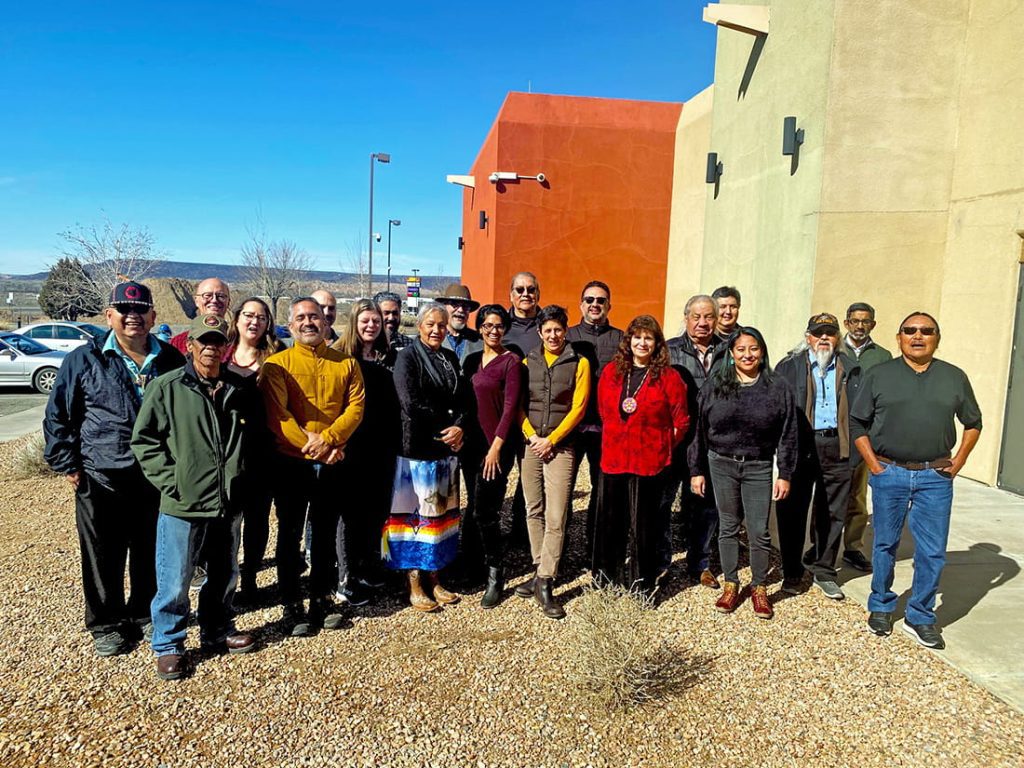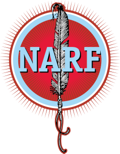Sacred places and the Native peoples connected to those spaces need new Native-led approaches to defending Native sacred lands, waters, and place-based ceremonies. Why is the promise of U.S. religious freedom often unfulfilled as Native Peoples struggle to protect sacred places? Does anything give reason for optimism that promises will be kept?
In the areas now known as California and Oregon, the Pit River peoples have been divided into several Tribal Nations. They remain united in their goal to find allies and create dialogues that will benefit a place critical to their communities’ public health and cultural survival. Radley Davis (Pit River) shares his peoples’ story of the need and work to protect and restore access to one of their sacred places: Sáttítla, known in English today as Medicine Lake. The Native American Rights Fund’s Sacred Places Project gained a snapshot of issues and solutions encountered by sacred place advocates like Davis and the Pit River peoples.
Background:
Cultural identity loss after land dispossession, genocide, and ongoing ecological harm create intergenerational and personal trauma that each person in a Native community needs to heal, healing that requires access to sacred places. Myra Parker (Mandan/Hidatsa) delineates the complex causes of why Indigenous communities need to heal and discusses how accessing sacred places can help Tribal Nations attain better public health.
Sacred places seemingly should receive protection under U.S. laws and policies that already exist. A U.S. Environmental Protection Agency review ruling should be able to stop development of a pipeline at Standing Rock. Under the Antiquities Act, U.S. Presidents have authority to protect sacred places and cultural treasures by establishing national monuments. A land sale that would demolish prayer and ceremonial sites forever creates a substantial burden preventing the free exercise of religion guaranteed in the U.S. Constitution.
Shortly after one U.S. administration apologizes for genocidal policies and establishes new Native leadership over an Interior Department committed to protecting sacred places, another administration storms in after a resounding electoral victory. Does anything give reason for optimism that promises will be kept?
The road to ensuring the existing laws and policies protect sacred sites remains a challenge for Native peoples. At the problem’s core, existing laws, policies, and sacred places protections use language not centered in Indigenous thinking. Talking about sacred places protection divides issues into non-Indigenous categories and frames it in the language of religious freedom and commodification. Sacred items become a “cultural resource” under environmental and historic preservation law and must be supported with the limiting language of superlatives like significant and important.
Manuel Pino (Acoma Pueblo) explains how any work to protect sacred places requires understanding differences in world views and value systems. Indigenous worldview with respect to land, and based on centuries of successful sustainable living on that land, ought to be given lead roles in policy and management decisions concerning the land.
The modern American concept of religion has never been up to the task of describing how Native peoples traditionally integrate the sacred with enviro-socio-economic-political facets of life and dominant society priorities. It follows that Native efforts to protect sacred places have failed in courts, even in the land of religious freedom.
The history of religious oppression of Native peoples in the U.S. led to a need for Native peoples to live much of their lives in secret. Former Isleta Pueblo Governor and Chief Judge Verna Teller (Isleta Pueblo) explains how lack of access and improving access to sacred places impacts the health and survival of Indigenous lifeways, cultures, and peoples today.
Definitional questions remain vexing when applying existing religious freedom law to Native sacred places. Three of the cases the Supreme Court used to narrow First Amendment religious freedom protections were Native American cases, turning in part on these definitional questions, and one of them involved a sacred place.
In Lyng v. Northwest Indian Cemetery Protective Assn. (1988), a U.S. Forest Service logging road was scheduled to be built at a place Native ceremonial practitioners sought to protect. The Court ruled that the Native practitioners had no First Amendment right of action to protect a sacred site and that the Native view of the sacred was too expansive (subsequent congressional enlargement of a public land area then protected the sacred place by encompassing it).
The Court also ruled in Lyng that the American Indian Religious Freedom Act (1978) did not provide a right of action. AIRFA declares that it is the “policy of the United States to protect and preserve for American Indians their inherent right of freedom to believe, express, and exercise the traditional religions…including but not limited to access to sites, use and possession of sacred objects, and the freedom to worship through ceremonials and traditional rites.” Executive Order 13007, Indian Sacred Sites (1996), is an AIRFA follow-on action that also directs federal agencies to defer to Native Peoples where federal actions impact sacred places. While good progress has been made under both, the U.S. still has not delivered on the promise of its policy declaration in AIRFA.
Courts continue to deny Native protection of sacred places under religious freedom law (Navajo Nation v. U.S. Forest Service, 9th Cir, 2008), although the Supreme Court later (in Hobby Lobby, 2014) interpreted the Religious Freedom Restoration Act to extend religious free exercise protections beyond the limits set by courts under the First Amendment.
Long whipsawed by inconsistent policies and shifting political winds of federal administrations and congresses, Native peoples have cobbled together existing laws to defend sacred places. Environmental, historic preservation, and cultural resource laws often fail to secure needed protection. This can be due to the procedural labyrinth and built-in delays of such processes; a lack of good faith in federal agencies’ dealings; and the dearth of timely, meaningful consultation with Native Peoples.
Scott Aikin (Prairie Band Potawatomi) discusses how policy deeply impacts the health of Native peoples by granting or restricting access and protection to sacred places. Policy at any level of government, even at the federal level, can and does change.
“Since its inception, NARF has worked to protect Native sacred sites, lands, and the free expression of Native religion. Native Peoples in the U.S. have long relied on tribal sovereignty, treaties, and religious freedom law to protect sacred places,” said NARF Staff Attorney Brett Lee Shelton. “What we’re finding is sacred place protection needs rethinking in courts, and NARF’s Sacred Places Protection Project aims to begin that re-envisioning process.”
“American religious freedom law frequently harms the free exercise of Native religions by constricting protection to beliefs only, and excluding the exercise of religious liberties and the protection of religious edifices and locations, which other major religions enjoy,” Shelton explained.
Project Updates:
January 2022: NARF Launches Sacred Places Think Tank
To strengthen protections for Native Peoples’ sacred places in the United States, NARF launched Sacred Places Protection: Fulfilling U.S. Religious Freedom Promises to Native Peoples.
Advancing sacred places protection requires creative, strategic, and collaborative rethinking of fundamental language and practices. To guide and lead this work, NARF formed a team of Native traditional knowledge bearers and intellectual leaders whose lives are devoted to this work. That team included Senior Policy Advisor Suzan Harjo (Cheyenne & Hodulgee Muscogee), and project Advisory Circle members Joe MistyLake Garcia (Ohkay Owingeh), Tina Kuckkahn (Lac du Flambeau Ojibwe), Hon. Delbert Smutcoom Miller (Skokomish), and Lois Risling (Hoopa).
Support from the Henry Luce Foundation allowed the Sacred Places Advisory Circle and project staff to encourage new scholarship by convening Native and non-Native thought leaders on the topic of sacred site protections. The funding also allowed the project to begin conducting professional development activities and producing outreach materials on sacred places protection.
Convenings
The three-year project convened professionals, activists and cultural bearers working to protect sacred places.
This dialog took place in Albuquerque at a gathering convened by the Native American Rights Fund and the John Hopkins Center for Indigenous Health.
The convenings allowed Native experts to help identify failings to protect Native sacred places in existing law and policy. Attendees shared and discussed potential solutions grounded in Indigenous knowledge.

In a series of convenings such as this one convened at Ohkay Owingeh in February 2023, Indigenous experts found allies across disciplines and cross-culturally.

The connections and networks built will aid in better protecting Native sacred places.
Relationships with land based on centuries of sustainable living still remain, and can inform policy discussions about land management far more than has been allowed so far. David LaSarte-Meeks (Coeur d’Alene) encourages Native people that they have what it takes to follow in the footsteps of their ancestors, innovate, and lead next generations.
Read More: Sacred Places and Public Health Convening
More Cases

